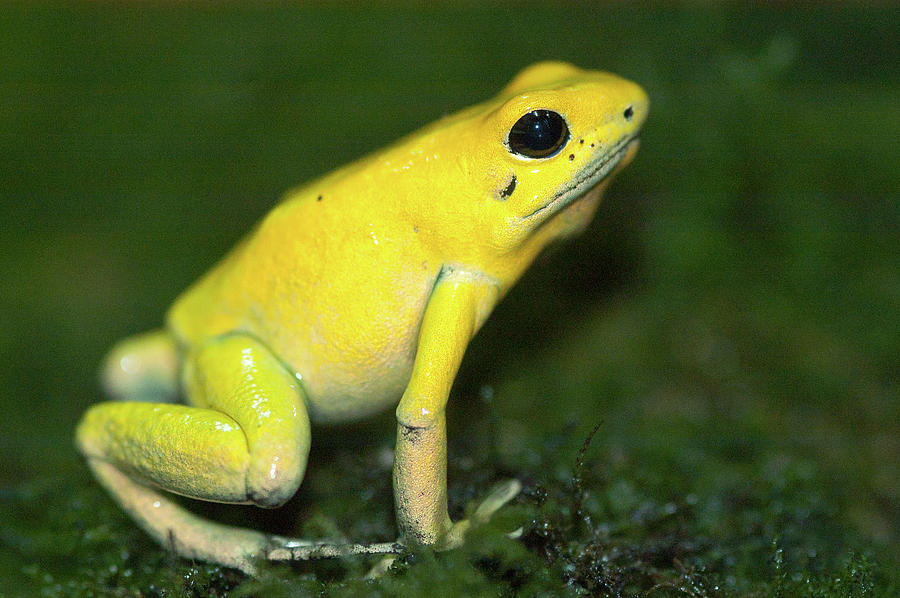

Batrachotoxin attacks the sodium channels of the cells, but the frog has special sodium channels that the poison cannot harm. The poisonous frogs are perhaps the only creatures to be immune to this poison. This snake is resistant to the frog's poison, but is not completely immune. terribilis poison kills whatever comes into direct contact with its skin, except for a snake, Liophis epinephelus.
GOLDEN POISON DART FROG SKIN
The golden poison frog, like most other poisonous frogs, stores its poison in skin glands.

Other related toxins are histrionicotoxin and Pumiliotoxin, which are found in frog species from the genera Dendrobates, Oophaga, and Ranitomeya. Batrachotoxin is only found in three poisonous frogs from Colombia (genus Phyllobates) and three poisonous birds from Papua New Guinea: Pitohui dichrous, Pitohui kirhocephalus and Ifrita kowaldi.

This extraordinarily lethal poison is very rare. This estimate will vary in turn, but most agree that this dose is enough to kill between 10 and 20 humans, which correlates to up to two African bull elephants. terribilis is generally estimated to contain about one milligram of poison, enough to kill about 10,000 mice. The average dose carried will vary between locations, and consequent local diet, but the average wild P. There is no known antidote for batrachotoxin, and it may cause death in humans in under five minutes. After forty-five seconds to one minute, siezures occur, quickly followed by paralysis and death. This causes immediate severe pain, fever, and repeated electrical jolts in the fingers and toes. Chickens and dogs have died from contact with a paper towel on which a frog had walked.īatrachotoxin is absorbed through the pores of the skin, where it makes its way into the nervous system and begins to shut the nerves down. Alkaloid batrachotoxins can be stored by frogs for years after the frog is deprived of a food-based source, and such toxins do not readily deteriorate, even when transferred to another surface. This can lead to heart failure or fibrillation. The golden poison Frog's skin is densely coated in alkaloid poison, one of a number of poisons common to dart frogs ( batrachotoxins) which prevents nerves from transmitting impulses, leaving the muscles in an inactive state of contraction.


 0 kommentar(er)
0 kommentar(er)
